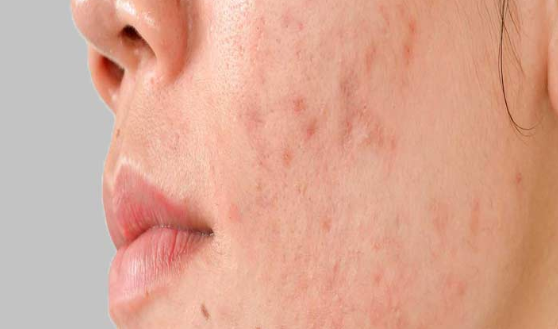Acne
is one of the most common skin issues that cause inflammatory
conditions. It can make a person self-conscious or embarrassed about
their skin. Make-up, oil, hormonal imbalance, and dirt can block
pores and give rise to acne and acne scarring.
Scarring
is a consequence of acne; anyone who experiences a breakout can have
temporary or permanent scars. Scarring can occur as a result of
damage to the skin during the poor healing of active acne, making a
negative impact on one’s self-esteem. The acne scarring is most
common in those who have inflammatory acne, distinguished by several
pimples and cysts. People suffering from both acne and acne scars can
get it treated with carbon laser peel treatment offered at Dr.
Dixit’s Cosmetic Dermatology Clinic by the best
skin specialist in Bangalore,
Dr. Rasya Dixit.
Carbon laser peel is a well-known
aesthetic treatment that makes the skin appear rejuvenated, youthful,
and radiant. It works by removing the top layer of the skin,
resulting in a new healthy skin. The treatment involves the
application of a carbon paste followed by a Q-switched Nd: YAG laser.
The carbon peel laser process is non-invasive and painless. Acne,
acne scar, aging lines, open pores, closed pores, oily skin,
photoaging, pigmented skin, etc. can be managed with this treatment.
There is a removal of the skin's uppermost dead layers, resulting in
an immediate glow with younger looking texture.
Carbon
laser peels provides an even skin glow with a perfect texture and
complexion. It works to restore skin balance and also removes
pigmentation of the skin, which develops from sun damage,
inflammation, hormonal changes, and acne.
Pre-operative
care:
Hydration:
The candidate must stay hydrated, which helps in promoting
elasticity in the skin.
Avoid
excessive sun exposure:
Apply sunscreen regularly. Sunscreen should be an integral part of
everyone’s skincare regime. Use sunscreen with SPF (Sun Protecting
Factor).
Stop
using topical skincare actives:
Discontinuing the usage of topical exfoliants such as AHAs, BHAs,
PHAs, and skin lightening creams 5-7 days before the treatment
reduces the risk of irritation to the skin during the healing
process, thus reducing the risk of complications.
Carbon
Laser Peel Procedure:
Carbon
laser peel
is a non-invasive, painless, with no downtime procedure that helps
rejuvenate acne-prone skin. It gently removes the top layer of the
skin, leaving a glow with a youthful complexion. The procedure is
expected to exfoliate the skin, reduce the pore size, smooth out the
skin, brighten the complexion, and make the skin softer and look more
radiant. A layer of liquid carbon is applied to the face and is
allowed to penetrate deeply into the pores. Let it dry. Then a laser
across the surface of the skin is passed. Its energy and heat are
absorbed by the carbon paste that destroys the particles in the
pores.
Carbon absorbs light energy. The reaction causes a
mini-explosion which pushes the energy, in the form of heat, deep
into the layers of the skin where elastin and collagen are activated
and cells begin producing new collagen. Meanwhile, the carbon is
vaporized along with any dirt, oil, acne-causing bacteria, and dead
skin cells, as the explosion occurs.
Result
A
candidate may experience some mild redness after the treatment, but
they will also see results in their glowing, radiant skin, and
reduced acne and pore size immediately following the first treatment.
This treatment has the power of multiple chemical peels in a safe and
non-invasive laser procedure. A candidate will begin to see powerful
results after only one session. A course of four to five sessions can
give great results in improving collagen production, reducing
oiliness, and achieving tighter, more radiant skin.
The
Advantages offered by Carbon Laser Peel Treatment:
It reduces acne, scars, and post-acne discoloration.
It reduces fine lines and wrinkles.
It tightens dilated pores.
It removes dead skin cells from the superficial epidermal layer.
It stimulates collagen growth.
It improves skin texture.
It reduces blackheads and whiteheads.
It brings back the skin’s radiance and reveals skin that is smoother and younger-looking.
It removes dead skin and helps in making the skin look vibrant and youthful.
It offers the best fighting chance against melasma, which is caused by hormones and prolonged exposure to UV rays.
It exfoliates and makes the skin shiny.
It eradicates blotchiness due to the sun, resulting in younger-looking skin.
It minimizes scarring from past injuries. These chemicals ease the pores and remove the top layer of the skin to take off blackheads.
Other
Acne Treatment Offered by Dr. Rasya Dixit:
Chemical
peels – Chemical
peels exfoliate the top layer of skin, facilitating the removal of
comedones without discomfort. This quickly improves the skin's
appearance and aids in acne drying out. Additionally, acne-related
pigmentation diminishes. Additionally, peels lessen the requirement
for greater anti-acne medication dosages. At Dr. Dixit’s Cosmetic
Dermatology Clinic, skin
clinic in Bangalore
glycolic and salicylic peels are the most often employed chemical
peels. Depending on the affected region, they may be done on the
face, shoulders, back, and chest. They may be safely conducted around
lunchtime in the clinic and have little to no recovery time. Chemical
peels, like TCA peels, Black peels, and Retinol peels, are very
effective at removing acne scars and pigmentation.
When
it comes to decreasing acne, photo facials are another effective
therapy. The oil secretion of the skin is reduced with the use of
either an IPL or Q-YAG laser equipment. These aid in reducing the
redness of scars and acne, and their effects are almost immediate.
These are helpful last-minute party preparations.
Want
to get the benefits of these advanced acne treatments? Book an
appointment now with the best
dermatologist
in Bangalore,
Dr. Rasya Dixit to avail the benefits!
Read More - Carbon Laser Peel




